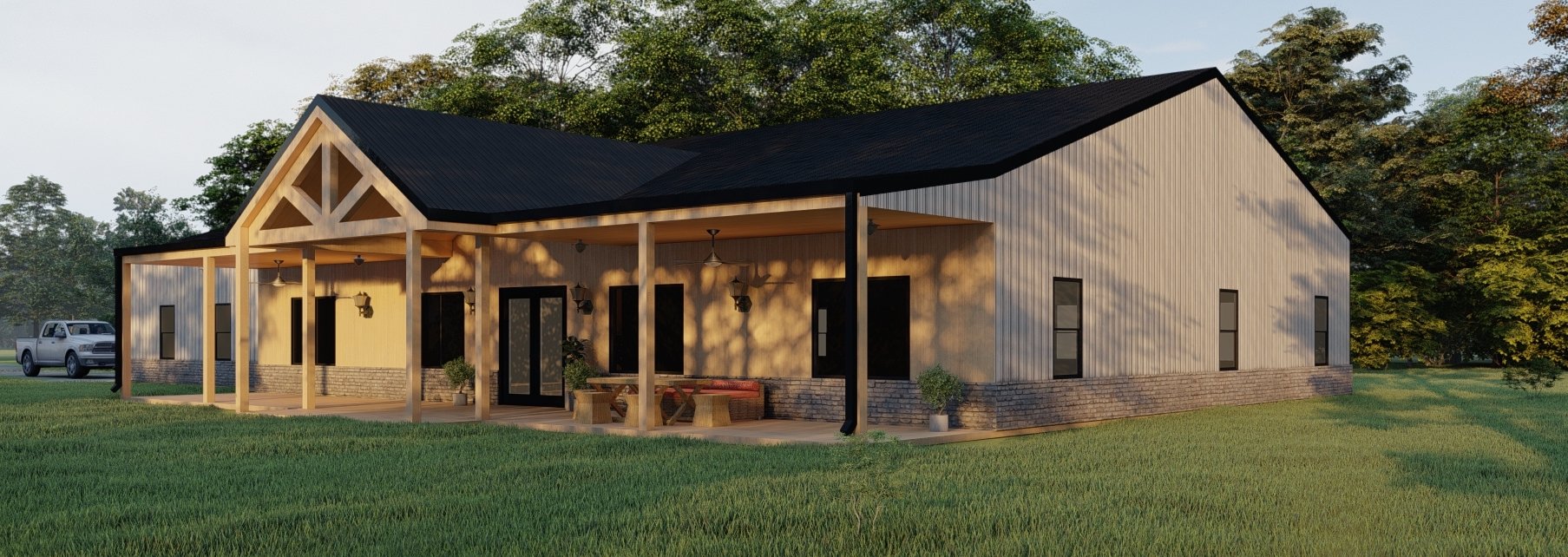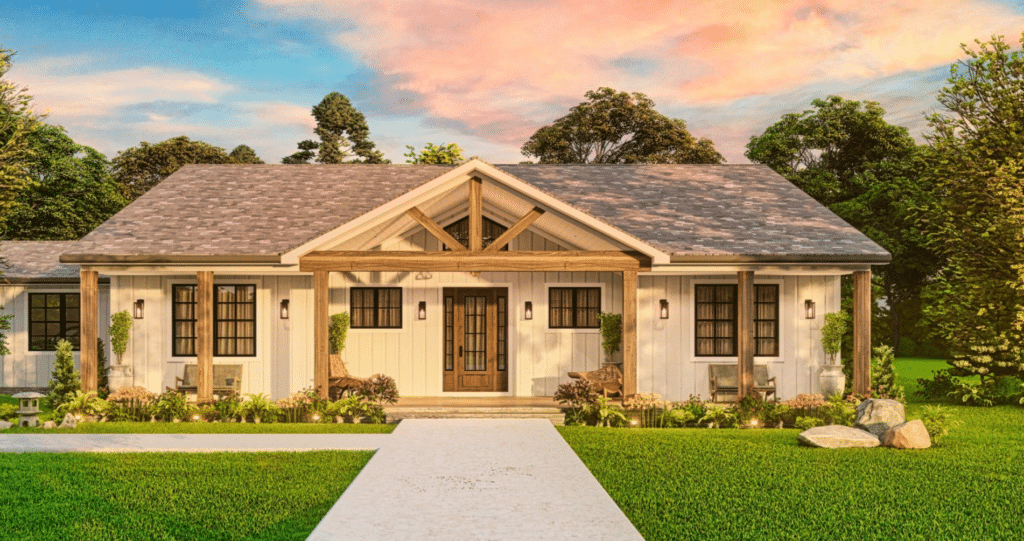Barndominiums Vs. Standard Houses: a Detailed Comparison of Way Of Life and Functionality
The choice in between barndominiums and typical homes incorporates various factors, including way of life choices and functional demands. Barndominiums are characterized by their open designs and versatility, frequently appealing to those who focus on common living and adaptability.
Introduction of Barndominiums
Barndominiums, an unique real estate fad acquiring appeal across various regions, mix the rustic charm of barn-style style with the capability of contemporary space. These one-of-a-kind frameworks generally are composed of a metal or timber structure, combining open layout and high ceilings with energy-efficient features. Frequently positioned on expansive country homes, barndominiums offer home owners the possibility to take pleasure in a serene way of life while supplying enough space for different activities.
The convenience of barndominiums expands beyond their aesthetic allure; they can offer as both living quarters and functional areas for leisure activities, workshops, and even tiny services. Their flexible design enables very easy modification, suiting varied family demands and preferences. Many owners appreciate the low maintenance needs related to steel siding and roof, adding to lasting toughness.

Attributes of Traditional Residences
Emphasizing timeless style and convenience, standard homes are characterized by their unique building designs, which usually show historical impacts and local aesthetics. Typical attributes include in proportion exteriors, gabled roofings, and an emphasis on workmanship, causing a cozy and inviting atmosphere.
Typical homes frequently incorporate elements such as crown molding, wainscoting, and hardwood floor covering, enhancing their classic allure. They generally feature multiple rooms with specified objectives, advertising family communication while permitting privacy. website. The format typically includes official living and eating areas, which are conducive to entertaining guests and hosting family events
Exterior materials such as block, timber, or stone are frequently made use of, contributing to longevity and a feeling of durability. Barndominium builder. In addition, lots of typical homes are made with front verandas or stoops, fostering a feeling of neighborhood and connection with the area
Landscaping plays a significant function in typical home layout, with well-maintained gardens and pathways that boost visual appeal - visit site. On the whole, traditional homes personify a feeling of fond memories and stability, appealing to those who value heritage and an extra structured living atmosphere
Expense Contrast
Usually, an expense comparison in between barndominiums and typical homes discloses considerable differences in construction costs and overall financial investment. Barndominiums, commonly built from metal or steel frameworks, normally incur reduced product and labor costs than standard homes developed from wood and block. The simplified style of barndominiums can translate to decreased construction times, additionally reducing labor costs and quickening tenancy.
On standard, the cost per square foot for a barndominium ranges from $100 to $150, while standard homes can vary commonly, usually falling between $150 and $300 per square foot, depending on place, products, and design intricacy. This cost variation makes barndominiums an appealing option for budget-conscious purchasers seeking bigger living spaces without sacrificing high quality.
Additionally, barndominiums might cause long-lasting savings through reduced upkeep Get More Info expenses, energy efficiency, and insurance policy prices. Their long lasting building and construction materials frequently call for much less maintenance in time compared to typical homes. Nevertheless, it is vital to consider that while initial expenses might be reduced for barndominiums, the last investment will additionally rely on specific customization and desired features, which can affect the overall expense in both housing types.
Way Of Life and Area Considerations
When thinking about way of living and room, barndominiums provide a distinct flexibility that interest a variety of house owners. These hybrid frameworks incorporate property dealing with functional room, frequently featuring open floor plans that can be adapted to match private requirements. This adaptability is especially helpful for families or individuals looking for a tailored living environment, enabling diverse usages such as office, workshops, or entertainment locations.

In addition, the aesthetic appeal of barndominiums can deal with both rustic and contemporary preferences, making them a flexible choice for numerous layout choices (Barndominium builder). Inevitably, the choice between a barndominium and a conventional home commonly hinges on how well each option aligns with the house owner's way of life desires and spatial demands, highlighting the relevance of thinking about personal concerns in the decision-making procedure
Ecological Effect and Sustainability
The ecological effect and sustainability of barndominiums existing compelling advantages contrasted to traditional homes. Mainly constructed from steel and various other sturdy products, barndominiums are commonly built making use of recycled resources, reducing the demand for brand-new products and decreasing waste. Their design commonly highlights open rooms, which can result in reduced power usage for heating & cooling contrasted to conventional homes with more segmented layouts.
Furthermore, barndominiums can include sustainable features such as solar panels, rain harvesting systems, and progressed insulation methods, enhancing their energy efficiency. The flexibility of their design allows home owners to integrate these technologies a lot more perfectly than in lots of conventional homes, which might call for extensive retrofitting.
Furthermore, barndominiums often need less sources for building due to their simpler, extra reliable designs (see website). On the whole, barndominiums stand for a forward-thinking strategy to lasting living, aligning with contemporary environmental top priorities.
Final Thought
In summary, the choice in between barndominiums and typical homes pivots on individual way of life preferences and useful requirements. Barndominiums, with their open designs and lasting materials, provide to those seeking adaptability and public living.